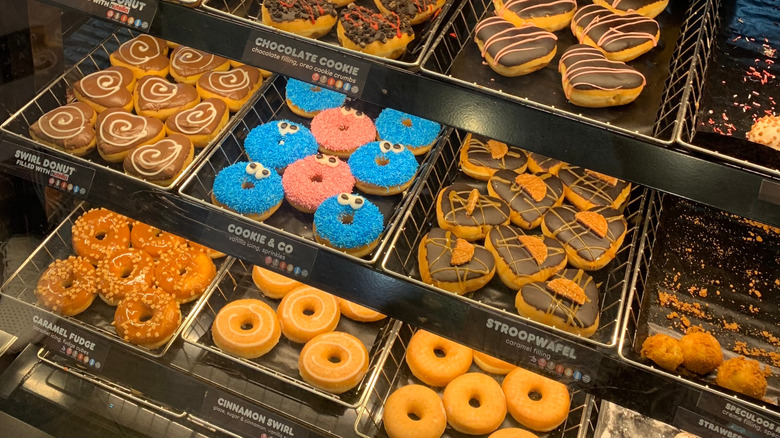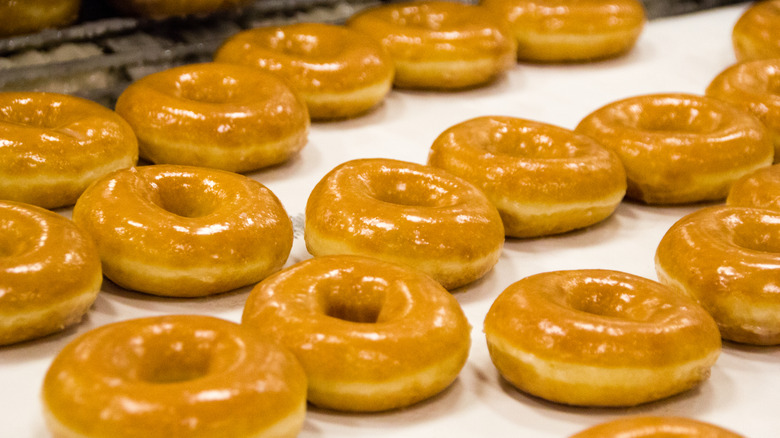Here's How Dunkin' Actually Makes Its Donuts
Dunkin' may have removed "Donuts" from its name in 2019 after shifting its focus to the coffee side of its business, but (thankfully) the biggest donut chain in America still serves a wide range of those delicious fried sweet treats. Launched in 1950 as a single location in Quincy, Massachusetts, today there are close to 10,000 locations covering much of the U.S., except for North and South Dakota and much of the Northwest. Since Dunkin's founding, the logistics of making its donuts has changed. Franchisees now have several options on how they get their donuts. They can either make them in-store, get them from regional centralized bakeries that are delivered fresh each morning, or have them shipped pre-made and frozen, from the company, making for slight taste differences between Dunkin' locations.
In all these cases, the way the donuts are made is basically the same and much of the process is automated. Because each donut variety tends to have different ingredients, we'll focus on how Dunkin' makes its glazed yeast donut. Making yeast donuts, as opposed to cake donuts, also involves a slightly different process since the dough needs time to rise and must be kept at a constant temperature, according to Robert Rosenberg, the former CEO of Dunkin'. "Yeast-leavened donuts were particularly challenging and time-consuming to produce," Rosenberg recalled in his memoir, "Around the Corner to Around the World: A Dozen Lessons I Learned Running Dunkin' Donuts."
Dunkin' uses a lot of automation to make donuts
The Dunkin' workers start with a flour mixture that includes enriched wheat flour, water, palm oil, non-fat powdered milk, a special yeast donut concentrate that includes leavening, salt, and soy flour, and various other ingredients. This gets put into an industrial mixer that perfectly mixes the dough. When the dough is ready, it's then transferred to the sheeter machine, which rolls out the dough to a consistent thickness and dusts it with flour to prevent sticking.
Next, a machine cuts the donut shapes out of the dough as it rolls underneath on a conveyor belt. For in-store production, a dispensing machine full of dough extrudes it and cuts the rings. The next step involves frying the dough in a combination of palm, soy, and cottonseed oil at 375 degrees Fahrenheit, which is within the ideal temperature range for frying donuts. For both in-store and larger baking facilities, the donuts cook for 45 seconds on each side, with the only difference being that the process is completely automated at the larger bakeries. Then, after being cooled, the donuts pass under a glazing machine. Glazing is done by hand at in-store bakeries. And from there, they get scarfed down by folks like you and me. So next time you bite into a Dunkin' donut, you'll know all the steps it took before reaching your mouth.

